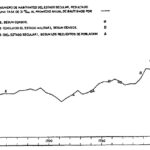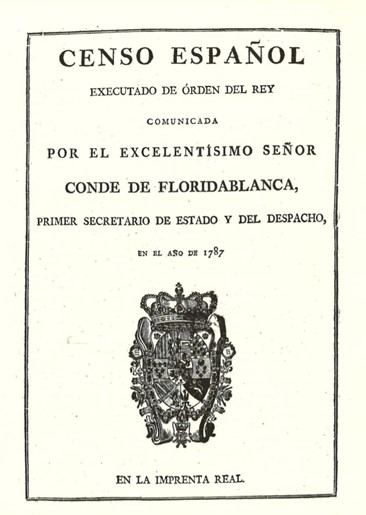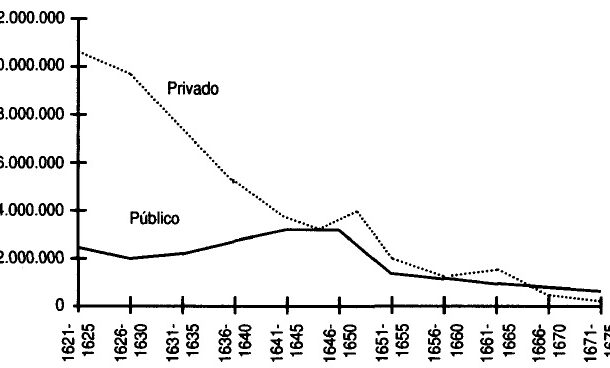The move of the Court of Philip II to Madrid in the spring of 1561 was the contextual factor that boosted the population of the Manzanares region. The results obtained indicate that at the end of the 16th century the city had between 85,000 and 95,000 inhabitants, a population comparable to that of European cities such as Florence, Palermo, Antwerp, Bologna and Lisbon. With the move of the Court to Valladolid under Philip III between 1601-1606, González Dávila warned of excessive expense and damage to both Castillas. Madrid suffered great need with the lack of people (according to Cabrera de Córdoba), as the lack of people and houses fell by the day: the number of baptisms fell by a third. With the return of the Court in 1606, uninterrupted growth began until 1630, when the city surpassed 130,000 inhabitants. The bad harvests of 1629-30 had a major effect on the city’s supplies and the shortages led to a mortality crisis, after which the number of inhabitants seemed to fall and stagnated at 125,000 until 1670. However, irregularities in the supply of wheat and flour in 1698-99 provoked a riot against the Count of Oropesa. The crisis at the beginning of the 18th century, together with the problems of the War of Succession, caused a mortality rate where the population fell to 109,000 between 1710-1714, recovering to 1630 levels between 1730-39. From then on, a more accelerated growth began, favoured by the relative decrease in deaths. The poor harvests at the end of the 18th century triggered a major subsistence crisis that combined transport difficulties and social revolts in protest against the hoarding of grain for the Court. The demographic recovery began in 1806, but was interrupted by the War of Independence which, from 1814 onwards, saw the city grow to 201,000 inhabitants in 1825.
Collection: Graphics
Project: 3. Rural world and urban world in the formation of the European identity., 4. Family, daily life and social inequality in Europe.
Chronology: XVI, XVII, XVIII, XIX
Scope: Secondary Education, Baccalaureate, University
Link: https://www.adeh.org/revista/1984,%203/M%20Carbajo,%20II,%203,%201984,%20pp%204-18.pdf
Resource type: Graph
Format: Line chart
Source: Carbajo Isla, María, «La población de la Villa de Madrid desde el siglo XVI hasta mediados del siglo XIX», Revista de Demografía Histórica, vol. III,1984, pp. 4–18.
Language: Spanish
Date: 1984
Owner: Álvaro Romero González (Modernalia)
Copyright: © María Carbajo Isla © Revista de Demografía Histórica
Abstract: Evolution of the estimated number of inhabitants of the town of Madrid since the settlement of the Court in 1561
Image
Tags








